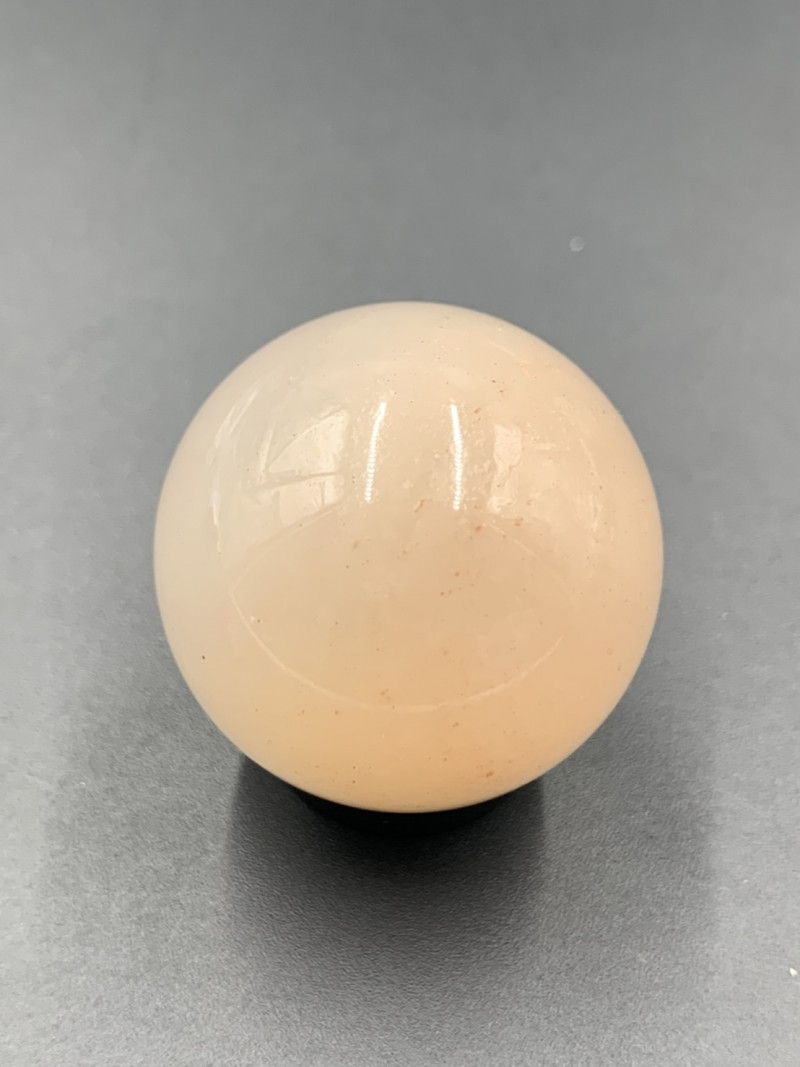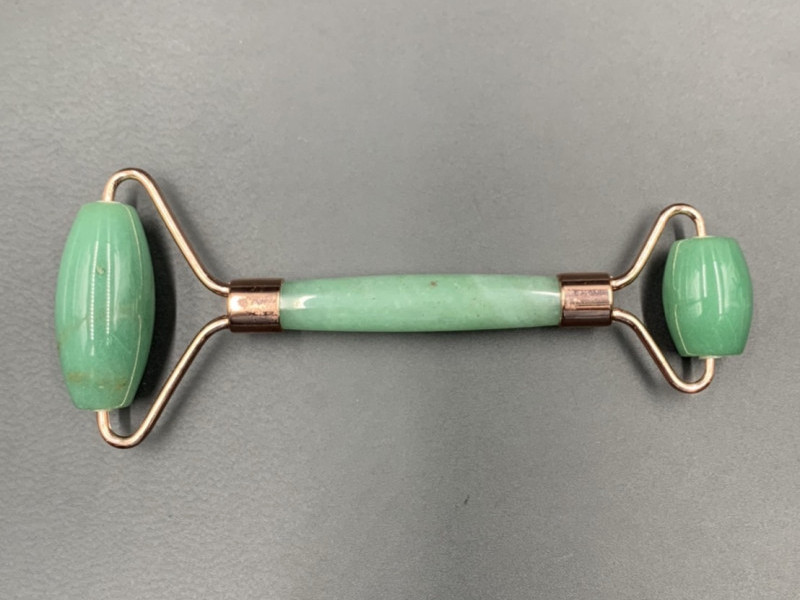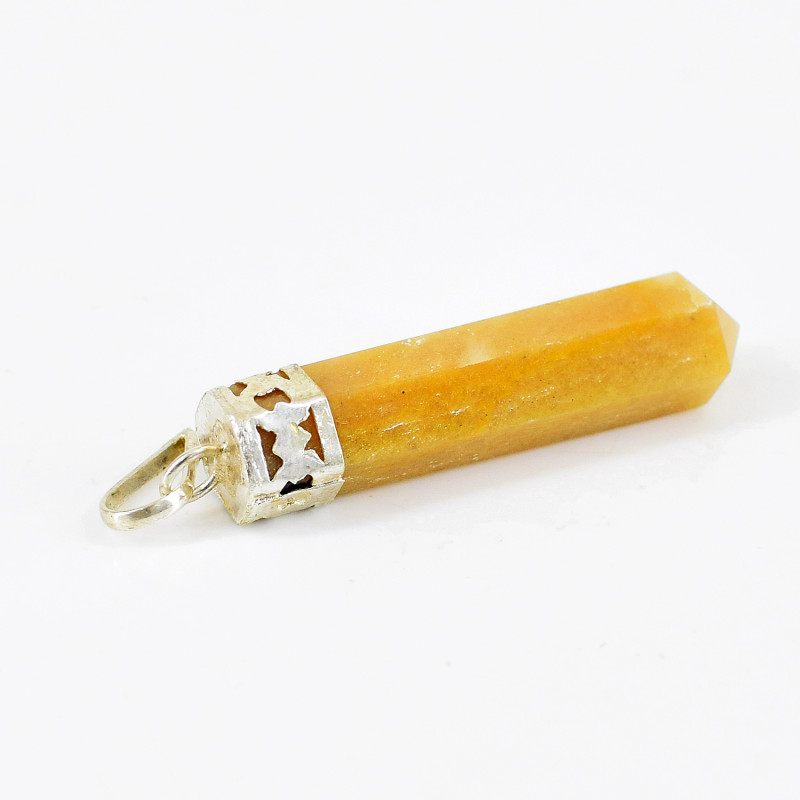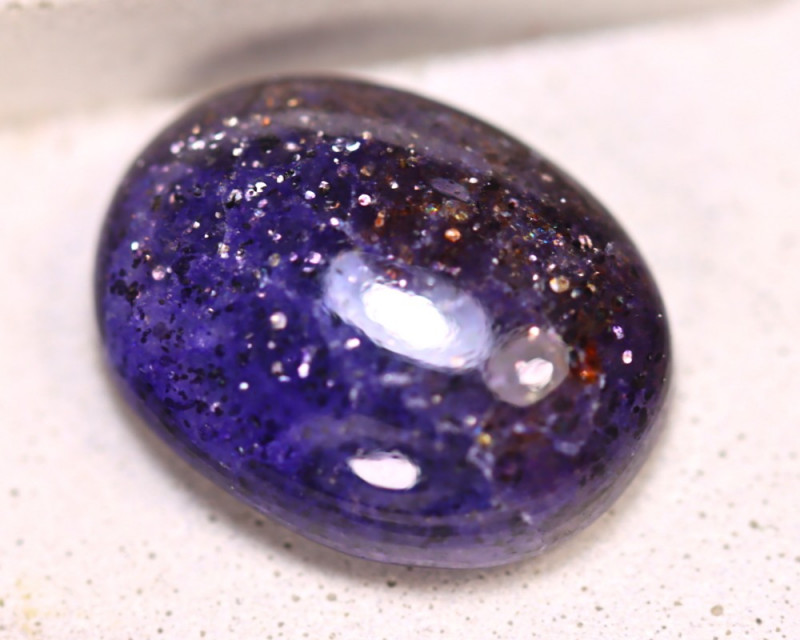
Pietra avventurina: storia, significato, usi e altro
 Se cercate una pietra unica e affascinante con un incredibile potere curativo, permetteteci di presentarvi l'avventurina. Questa pietra della prosperità può portare successo e abbondanza a chiunque. Ma cos'è l'avventurina? E già che ci siamo: a cosa serve l'avventurina nella vita quotidiana?
Se cercate una pietra unica e affascinante con un incredibile potere curativo, permetteteci di presentarvi l'avventurina. Questa pietra della prosperità può portare successo e abbondanza a chiunque. Ma cos'è l'avventurina? E già che ci siamo: a cosa serve l'avventurina nella vita quotidiana?
L'avventurina è una varietà unica di quarzo, nota per la sua caratteristica brillantezza. Questa splendida luminosità rende l'avventurina perfetta per qualsiasi cosa, dalle sculture ornamentali ai gioielli sfaccettati.
Oggi vi guideremo attraverso tutte le specifiche dell'avventurina che dovete conoscere. Lungo il percorso, scoprirete come i benefici dell'avventurina possano infondere tranquillità e fortuna nella vostra vita.
Pronti a scoprire cosa rende speciale l'avventurina? Iniziamo!

Cos'è la pietra avventurina?
L'avventurina è una pietra preziosa silicata disponibile in molti colori, ma il più delle volte è verde. Potresti incontrare il termine "feldspato avventurina", ma questo è il nome commerciale della pietra del sole , un minerale feldspato plagioclasio.
Non ne hai mai abbastanza di brillantezza? Beh, la principale proprietà dell'avventurina è la sua brillantezza. Minuscole inclusioni scintillanti creano un effetto scintillante chiamato avventurescenza.
L'avventurina è la pietra zodiacale di alcuni segni, ma soprattutto del Toro. Le proprietà dell'avventurina, che favoriscono il denaro, sono perfette per il Toro frugale e attento alla sicurezza. Con questa rilassante pietra verde in mano, il Toro può staccare la spina dal suo lavoro stressante ogni tanto.
Ora che abbiamo una piccola panoramica sull'avventurina, approfondiamo le sue specifiche.

Specifiche e caratteristiche dell'avventurina
Come abbiamo accennato, le pietre di avventurina sono composte da quarzo. Il tipo specifico di quarzo presente nell'avventurina è il calcedonio , una forma microcristallina di silice. La maggior parte dell'avventurina è in realtà un tipo di quarzite, una roccia composta principalmente da minuscoli granuli di quarzo compatti. Pur non essendo un minerale, la quarzite è spesso considerata una varietà di quarzo.
In termini di durevolezza, l'avventurina si colloca tra 6,5 e 7 sulla scala di Mohs . La maggior parte dei quarzi si attesta su un solido 7. Tuttavia, la presenza di inclusioni di mica minerale – che da sole si collocano tra 2 e 3 – riduce leggermente la durezza dell'avventurina. Ciononostante, l'avventurina è comunque più resistente di acciaio, vetro e titanio!
Colori : solitamente verde. Anche arancione, giallo, rosso, rosa, bianco, marrone, blu, grigio.
Struttura cristallina : trigonale (sottogruppo di esagonale)
Lucentezza : vitrea, cerosa e avventurosa
Trasparenza : leggermente traslucida o opaca
Indice di rifrazione : 1,54-1,55
Densità : da 2,64 a 2,69
Scollatura : nessuna o indistinguibile
E che dire delle proprietà gemmologiche dell'avventurina?

Proprietà della pietra preziosa avventurina
Come abbiamo già detto, l'avventurina è perfetta per realizzare bracciali o collane di grande impatto, ma perché? In che modo qualità come colore, purezza e taglio possono aiutarci a scegliere il gioiello in avventurina perfetto?
Cominciamo subito con il colore.
Colore
L'artista inglese David Hockney una volta disse: "Preferisco vivere a colori". La pensi così? Allora adorerai la vasta gamma di colori dell'avventurina.
I colori dell'avventurina includono blu, giallo, arancione, marrone, grigio, pesca e persino argento. Il colore più comune, tuttavia, è il verde.
Le brillanti tonalità verdi dell'avventurina derivano da un'inclusione chiamata fuschite, una varietà di mica ricca di cromo. Più fuschite contiene un'avventurina, più opaca e ricca sarà la sua saturazione.
L'avventurina è nota anche per la sua inconfondibile brillantezza metallica. Questa qualità scintillante è nota come avventurescenza e deriva da inclusioni minerali di piastrine. Con una quantità sufficiente di avventurescenza, il colore dell'avventurina può cambiare completamente!
Un'altra qualità dell'avventurina è la presenza di bande di colore o zone di colore. Poiché le inclusioni variano da pietra a pietra, un pezzo di avventurina potrebbe essere più scuro in alcune zone e più chiaro in altre.
Parlando di inclusioni, approfondiamo la chiarezza dell'avventurina.
Chiarezza
Essendo una delle 4 C della classificazione delle pietre preziose, la purezza gioca un ruolo fondamentale nel determinare il valore di un gioiello. Gemmologi e gioiellieri determinano la purezza in base a frazioni, imperfezioni e, soprattutto, inclusioni .
Le pietre preziose colorate appartengono a uno dei tre tipi di purezza stabiliti dal Gemological Institute of America (GIA). L'avventurina ha una purezza di Tipo II, il che significa che solitamente presenta alcune inclusioni visibili.
Come abbiamo già detto, le inclusioni possono influire notevolmente sull'aspetto dell'avventurina e perfino sul suo colore.
Ecco i minerali più comuni le cui inclusioni influenzano il colore dell'avventurina:
Fuchsite . La fuschite (un minerale di mica al cromo) conferisce all'avventurina un colore verde ghiaccio o blu. Tuttavia, una quantità eccessiva di fuschite, superiore al 10-20%, può causare sfaldamenti o spaccature nella pietra.
Ematite . Le inclusioni di ematite conferiscono all'avventurina colori autunnali, dal rossastro al marrone dorato.
Goethite . Le avventurine con inclusioni di goethite appaiono di colore marrone-verdastro o arancione.

Taglio
Grazie alla sua opacità e alla sua avventurosità, i tagli dell'avventurina vanno oltre la semplice gioielleria. In genere, l'avventurina verde viene utilizzata per cabochon o perline, utili per infilare collane e bracciali.
I cabochon sono pietre tagliate in modo da avere una base piatta e una sommità arrotondata. Sono lucidati ma non sfaccettati , il che li rende ideali per la meditazione o da portare con sé. La maggior parte dei cabochon è ricavata da pietre opache o brillanti come l'avventurina.
L'avventurina è anche comunemente utilizzata in vasi, ciotole e altri oggetti ornamentali. Non solo è resistente, ma può anche essere facilmente modellata e tagliata. Le incisioni sono piuttosto popolari. Queste incisioni di solito raffigurano animali o altre statuette.
Se invece preferisci i tagli tradizionali, non preoccuparti! L'avventurina è disponibile anche in tagli classici come il taglio rotondo, a cuscino, a pera e a marquise.
Oltre ai tagli tradizionali, le tradizioni che riguardano l'avventurina risalgono a centinaia, persino milioni, di anni fa. Viaggiate indietro nel tempo con noi ripercorrendo la storia dell'avventurina.

Storia e miti dell'avventurina
Il nome "avventurina" deriva dall'espressione italiana "a ventura ", che significa "per caso". Avete mai sentito parlare del vetro avventurina di Venezia? Se non l'avete mai sentito, ecco una breve storia!
Nel 1700, un operaio di Murano versò accidentalmente delle otturazioni di rame nel "metallo" fuso con cui stava lavorando. Questo nuovo materiale fu poi venduto come avventurino o avventurina . Questo materiale non era avventurina (era pietra d'oro), ma l'avventurina prese il nome perché aveva un aspetto incredibilmente simile.
Tuttavia, le leggende legate all'avventurina risalgono a molto prima del XVI secolo.
Leggende dell'avventurina
Nella valle etiope di Oma, talismani, perline e utensili risalenti a oltre due milioni di anni fa venivano realizzati in avventurina. Alcuni ritengono che questi siano stati tra i primi strumenti creati dall'uomo.
Anche altre pratiche antiche utilizzavano l'avventurina, come i rituali della ruota di medicina. Durante i rituali cerimoniali, le persone si riunivano attorno a una ruota e ognuno teneva una pietra di avventurina sul cuore. Credevano che la gemma li avrebbe collegati alle loro guide spirituali.
Parlando di guide spirituali, in molte culture l'avventurina era considerata una pietra che collegava i poteri superiori.
Nell'antica Cina, l'avventurina rappresentava la divinità buddista della misericordia e della compassione, Kuan-Yin. Gli antichi Greci e Celti associavano l'avventurina alle loro dee della fertilità e della natura, Fidais e Dione.
Le proprietà metafisiche dell'avventurina le hanno conferito nel corso del tempo un ruolo importante in numerose società.
Usi storici dell'avventurina
Gli antichi tibetani credevano che l'avventurina potesse migliorare la creatività e la miopia. Usavano persino la pietra sugli occhi delle loro statue per conferire loro maggiori poteri visionari, ovvero la capacità di infondere energia creativa nei sogni e nei desideri.
Avete mai sentito parlare delle Amazzoni? Erano una popolazione di donne onorata negli antichi miti greci e note per essere guerriere feroci e indipendenti. Fino al XIX secolo, l'avventurina era chiamata la "pietra delle Amazzoni". Queste guerriere usavano la gemma come talismano o come ornamento per le corazze.
Abbiamo già parlato dell'affascinante storia di questa gemma verde, ma da dove proviene l'avventurina?

Origini e fonti della pietra avventurina
Le pietre di avventurina tendono ad aderire tra loro. Di solito si formano in depositi sedimentari e, col tempo, i granuli si cementano formando arenarie.
Mentre la roccia che circonda questi depositi si consuma – a causa del calore, della pressione o degli agenti atmosferici – i granuli di quarzo rimangono. Si liquefanno e si combinano con altri minerali, come la fuschite, assumendo un aspetto completamente nuovo.
Quindi, dopo tutto questo, chi scava e trova questi cristalli?
Luoghi di estrazione dell'avventurina
I giacimenti di avventurina si trovano in tutto il mondo. In Asia, le miniere di avventurina si trovano in India, Russia e Cina. In Europa, l'avventurina proviene da Austria e Spagna. Nelle Americhe, Brasile, Cile, Canada e Stati Uniti ospitano giacimenti di avventurina.
I due maggiori produttori di avventurina sono l'India e il Brasile. La maggior parte dell'avventurina verde più popolare proviene dall'India, tanto che l'avventurina viene spesso definita "giada indiana".
Altri paesi producono avventurina di colori diversi. Ad esempio, Cile, Russia e Spagna vantano avventurina nelle tonalità del bianco, grigio e arancione.
Sebbene solo una parte dell'avventurina provenga dagli Stati Uniti, in particolare da Rutland, nel Vermont, il Canada è ricco di queste gemme.
Nella baia di McLaren, un'enorme tavola di avventurina è emersa dopo miliardi di anni trascorsi sottoterra. Le esclusive pietre di avventurina di McLaren presenti in questa miniera presentano sfumature verdi, nere e persino rosse. La cosa ancora più insolita è che alcune delle loro pietre sono multicolori!
Vi ha già incantato? Scopriamo insieme la magia delle proprietà dell'avventurina.

Significato della pietra avventurina
Cosa simboleggia l'avventurina? E a cosa serve, in generale?
L'avventurina simboleggia fortuna, pace interiore e ispirazione creativa. Nota come la "Pietra delle Opportunità", l'avventurina è una gemma portafortuna che può aiutare a manifestare ricchezza e soddisfazione.
Hai mai comprato un biglietto della lotteria? Alcuni dicono che portare una pietra di avventurina verde nella tasca sinistra possa aiutarti a vincere il grande tesoro!
Un altro beneficio dell'avventurina è la serenità. Ti senti stressato e sopraffatto? Tieni in mano una pietra di avventurina mentre mediti per qualche minuto. Lasciandoti avvolgere dalle sue vibrazioni rilassanti, inizierai a provare un maggiore senso di benessere e pace.
Come abbiamo già detto, i tibetani credevano che l'avventurina potesse migliorare la creatività. Beh, avevano ragione! L'avventurina può essere di beneficio ad artisti e creativi, donando loro il coraggio e la fiducia necessari per esprimere la propria passione nel mondo.
E ora? Esploriamo i vari usi dell'avventurina a scopo curativo e i suoi effetti spirituali.

Proprietà spirituali e curative dell'avventurina
Come abbiamo già detto, l'avventurina è un tipo di quarzo, mentre il quarzo ialino è il "Maestro Guaritore" delle pietre preziose.
Beh, conferisce questo potere curativo anche all'avventurina. Se l'energia del quarzo ialino è troppo forte per voi, apprezzerete la natura delicata delle proprietà curative dell'avventurina.
Per quanto riguarda la guarigione fisica , i benefici dell'avventurina riguardano il cuore e gli occhi.
Questa pietra preziosa può favorire la salute circolatoria, i disturbi cardiaci e i problemi di vista. Avvicinare un pezzo di avventurina fredda alla tempia può curare il mal di testa.
In termini di guarigione spirituale , l'avventurina è legata ai chakra . Il sistema dei chakra è un antico modello di centri energetici che collegano la salute fisica e spirituale. L'avventurina attiva i chakra del cuore e della gola.
Il chakra del cuore si trova al centro del petto, allineato con il cuore. L'avventurina può aiutare ad aprire il chakra del cuore, facendoti sentire più compassionevole e amorevole.
Il chakra della gola si trova all'altezza della clavicola. L'energia creativa dell'avventurina può aprirlo, facendoti sentire centrato e ispirato.
Quindi, sai come un'avventurina può prendersi cura di te. Ma come ci si prende cura dell'avventurina?

Cura e manutenzione dell'avventurina
Sebbene l'avventurina sia piuttosto resistente, è comunque importante prendersene cura. Ecco i nostri consigli per la cura dell'avventurina, che daranno alla tua gemma la longevità che merita.
Tenete l'avventurina lontana da sostanze chimiche aggressive, dall'esposizione al calore e da gemme più dure del quarzo. Tra queste, tutte le pietre della famiglia del corindone, come zaffiro e rubino, e del berillo, come smeraldo e acquamarina.
Quando non la usi, ti consigliamo di conservare la tua gemma di avventurina in un luogo buio, come un astuccio morbido o un portagioie.
Vorrai anche che quella gemma rimanga scintillante. Quindi, come si pulisce l'avventurina?
Segui questi passaggi:
Per prima cosa, procurati il materiale necessario: un sapone neutro, acqua calda e una ciotola.
Nella ciotola, mescola l'acqua calda e il sapone.
Metti l'avventurina nell'acqua e usa le mani o una spazzola morbida per strofinare delicatamente via sporco e detriti.
Risciacquare tutti i residui di sapone e asciugare con un panno di cotone o microfibra.
Impostare una routine di pulizia una volta al mese manterrà le tue gemme in perfette condizioni e ne manterrà il valore. Quindi, quanto vale una pietra di avventurina?

Prezzi e valore dell'avventurina
I prezzi della pietra avventurina sono molto accessibili, soprattutto se paragonati ad altre gemme verdi popolari come la giada o lo smeraldo.
Il prezzo dell'avventurina verde può variare dai 3 ai 30 dollari al carato. Tuttavia, la maggior parte delle gemme di avventurina , soprattutto all'ingrosso, si aggira tra i 3 e i 4 dollari al carato.
I cabochon sono una delle tipologie di avventurina più vendute. In genere costano tra 0,15 e 0,26 dollari al grammo (0,03-0,05 dollari al carato).
Preferisci cristalli grezzi completamente naturali? L'avventurina grezza si vende a circa 7-15 dollari al chilo (0,01-0,03 dollari al grammo).
Alcune avventurine sono più preziose di altre. Ad esempio, le pietre con maggiore avventurescenza hanno prezzi più elevati. Anche i colori rari di avventurina sono più preziosi, perché più difficili da trovare.
In definitiva, la cosa migliore è scegliere una gemma di avventurina che vi rispecchi. Con una fascia di prezzo così ampia, troverete sicuramente un gioiello adatto alla vostra personalità e al vostro budget!

Cerchi fortuna? Acquista l'avventurina oggi stesso!
E questo ci porta alla fine della nostra guida! Ora che sapete tutto sull'avventurina, potete capire perché queste gemme brillano in così tanti modi. Sotto la loro superficie scintillante si cela il potere di liberare creatività e abbondanza.
Dalla scoperta che ha dato il nome alla pietra avventurina alle opportunità che può offrire nella vita, questa gemma verde ha sicuramente un lato fortunato.
Come disse una volta l'attrice indiana Preity Zinta: "La fortuna aiuta sempre gli audaci... Coraggiose sono le persone che seguono il loro cuore; coraggiose sono le persone che si assumono dei rischi nella vita".
Se sei pronto a seguire il tuo cuore e ad abbracciare coraggiosamente il successo, l'avventurina è la scelta giusta. Come minimo, avrai una gemma abbagliante in tasca!
Pronto a trovare il tuo cristallo portafortuna? Acquista subito le pietre di avventurina!
Cerca il Gemstone Encyclopedia
Aste correlate
articoli Correlati
Ognuno di noi ha una pietra preziosa che corrisponde al proprio segno zodiacale. Queste pietre sono anche note come la tua Pietra Stellare. Scopri di più su queste pietre e qual è la tua Pietra Stellare.
10th May 2018
In origine, le pietre portafortuna o gemme erano associate a un segno zodiacale o al mese di nascita di un individuo. Scopri qual è la tua pietra e guarda le pietre che abbiamo in vendita.
8th Feb 2021
Esistono moltissimi strumenti sul mercato per testare una pietra preziosa, ma quali sono i principali strumenti necessari per un'analisi semplice? Diamo un'occhiata a quattro strumenti per testare le pietre preziose.
4th Mar 2020
Articoli Recenti
Le sculture in avorio di palma, chiamato anche avorio vegetale, sono un'alternativa naturale all'avorio di elefante, ricavato in modo etico dalla noce della palma sudamericana Phytelephas. Scopri tutto sull'avorio di palma in questa guida!
15th Jan 2026
Le pietre a forma di fiore di crisantemo sono meraviglie naturali caratterizzate da un motivo floreale di calcite bianca, celestina o andalusite incastonato su calcare nero o argillite.
13th Jan 2026
La pietra del sole a reticolo arcobaleno è una varietà di feldspato con tre splendidi effetti ottici dovuti alla presenza di varie inclusioni. La sua colorazione infuocata e il suo motivo a reticolo la rendono una gemma rara da collezione!
12th Jan 2026
Categorie di articoli
How To's is where you will find helpful articles from gem Rock Auctions on how to cut gemstones, select gemstones and buy gemstones.
9 Articoli





